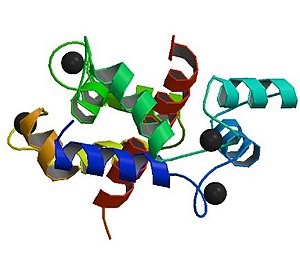Malignant hyperthermia
| Malignant hyperthermia | |
|---|---|
 |
|
| Abnormalities in the ryanodine receptor 1 gene are commonly detected in people who have experienced an episode of malignant hyperthermia, and may be used to determine the risk of episodes in their relatives | |
| Classification and external resources | |
| Specialty | Anesthesiology, critical care medicine |
| ICD-10 | T88.3 |
| ICD-9-CM | 995.86 |
| OMIM | 145600 154275 154276 600467 601887 601888 |
| DiseasesDB | 7776 |
| MedlinePlus | 001315 |
| MeSH | D008305 |
| GeneReviews | |
Malignant hyperthermia (MH) or malignant hyperpyrexia is a rare life-threatening condition that is usually triggered by exposure to certain drugs used for general anesthesia — specifically the volatile anesthetic agents and succinylcholine, a neuromuscular blocking agent. In susceptible individuals, these drugs can induce a drastic and uncontrolled increase in oxidative metabolism in skeletal muscle, which overwhelms the body's capacity to supply oxygen, remove carbon dioxide, and regulate body temperature, eventually leading to circulatory collapse and death if not immediately treated.
Susceptibility to MH is often inherited as an autosomal dominant disorder, for which there are at least 6 genetic loci of interest, most prominently the ryanodine receptor gene (RYR1). MH susceptibility is phenotypically and genetically related to central core disease (CCD), an autosomal dominant disorder characterized both by MH signs and myopathy. MH is usually revealed upon or shortly after exposure to certain general anesthetic agents. There is no simple, straightforward test to diagnose the condition. Treatment with dantrolene and other drugs is usually initiated when MH is strongly suspected. Dantrolene and the avoidance of triggering agents in susceptible people have markedly reduced the mortality from this condition.
The typical signs of malignant hyperthermia are due to a hypercatabolic state, which presents as a very high temperature, an increased heart rate and abnormally rapid breathing, increased carbon dioxide production, increased oxygen consumption, mixed acidosis, rigid muscles, and rhabdomyolysis. These signs can develop any time during the administration of the anesthetic triggering agents. It is difficult to find confirmed cases in the postoperative period more than several minutes after discontinuation of anesthetic agents.
...
Wikipedia
